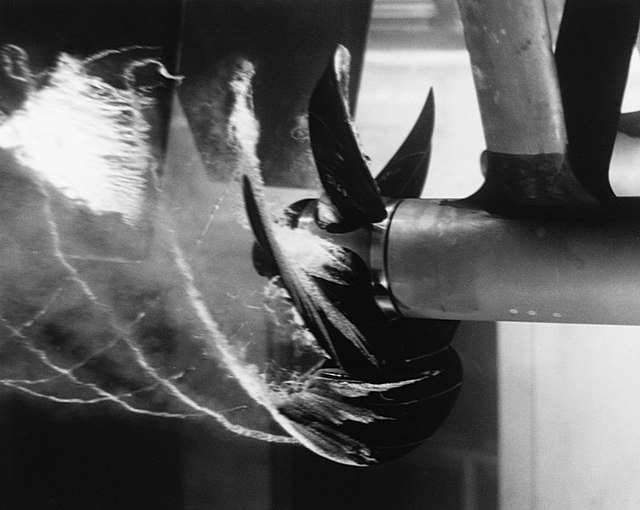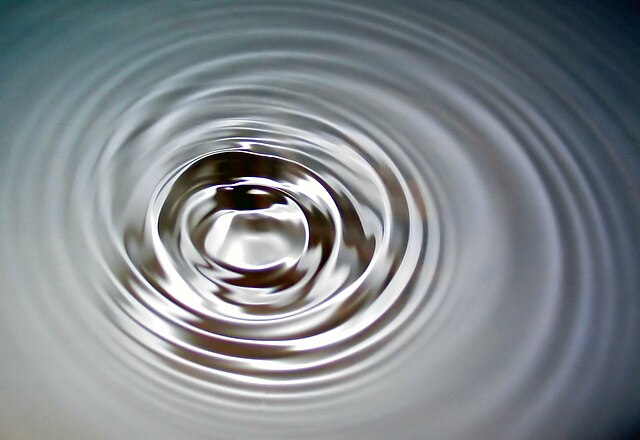In physics, a free surface is the surface of a fluid that is subject to zero parallel shear stress,
such as the interface between two homogeneous fluids.
An example of two such homogeneous fluids would be a body of water (liquid) and the air in the Earth's atmosphere. Unlike liquids, gases cannot form a free surface on their own.
Fluidized/liquified solids, including slurries, granular materials, and powders may form a free surface.
Disturbed free surface of a sea, viewed from below
A liquid is a nearly incompressible fluid that conforms to the shape of its container but retains a nearly constant volume independent of pressure. It is one of the four fundamental states of matter, and is the only state with a definite volume but no fixed shape.
The formation of a spherical droplet of liquid water minimizes the surface area, which is the natural result of surface tension in liquids.
A lava lamp contains two immiscible liquids (a molten wax and a watery solution) which add movement due to convection. In addition to the top surface, surfaces also form between the liquids, requiring a tension breaker to recombine the wax droplets at the bottom.
Cavitation in water from a boat propeller
Surface waves in water





